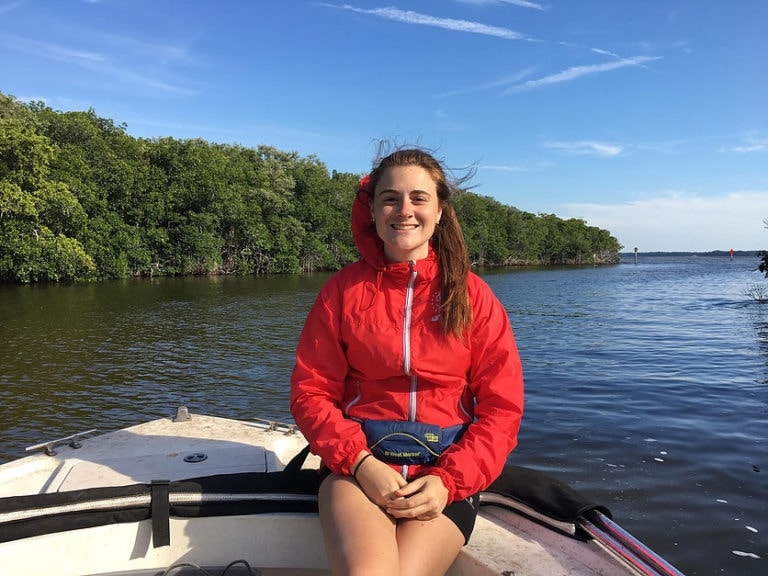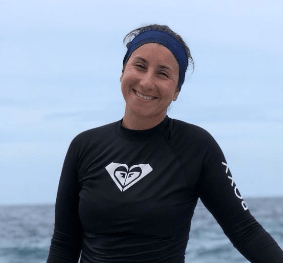Researchers and citizen scientists spent the day aboard R/V ANGARI conducting shark research offshore Palm Beach County.
EXPEDITION DETAILS
April 26, 2019
West Palm Beach, FL
Gina Clementi
Laura García Barcia
Kirk Gastrich
Nick Ogle
Jessica Quinlan
All sharks were fished for, caught, studied and released for research purposes under Florida permits held by Florida International University scientists.
On this expedition, Florida International University researchers from the Predator Ecology and Conservation Lab and the Marine Community and Behavioral Ecology Lab led 12 citizen scientists on a shark research expedition off Palm Beach County. The citizen scientists included the 2018 Youth Making Ripples Film Competition winners from Flagstaff, Arizona and the Youth Making Ripples team. Everyone worked together to help researchers assemble, deploy and retrieve baited remote underwater video (BRUV) equipment and drum lines, take measurements, tag sharks and collect tissue samples. On this expedition, 7 drum lines were deployed at different depths and participants were successful in catching and releasing 1 tiger shark, 1 scalloped hammerhead shark, 1 sharpnose shark and 1 nurse shark.
CHIEF SCIENTISTS

Laura García Barcia studied Environmental Biology at the Autonomous University of Barcelona. During her senior year, she transferred to FIU and studied Marine Sciences while volunteering in the Marine Community Ecology Lab. Her research focuses on the conservation biology of sharks, specifically the level of pollutants found in different shark tissues and how this varies with species, trophic level, and region of origin. Laura also takes part in several education and outreach activities at local schools to explain the importance of protecting sharks.
____________________

Kirk Gastrich organizes and leads sampling trips for Global FinPrint in the Western Atlantic and Pacific Ocean regions. His work takes him around the globe to study community ecology and predator/prey interactions of marine and estuarine megafauna, including elasmobranchs, marine mammals, and aquatic reptiles. His research also includes studies of muscle biochemistry, physiology and swimming performance of fishes.
____________________

Gina Clementi manages the Predator Ecology and Conservation lab at FIU. Her research focuses on how anthropogenic and environmental factors impact elasmobranch abundance and diversity by using baited remote underwater video surveys (BRUVS) to analyze marine predator distributions in tropical and temperate ecosystems. Gina also trains citizen scientists and manages interns analyzing BRUVS for the Global FinPrint project.

